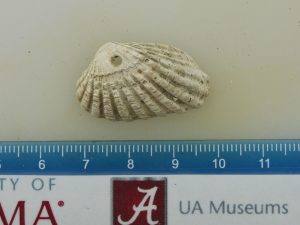In the Fall of 2017, then Curator of Paleontology Dana Ehret, and Director of Museum Research and Collections John Abbott received a $22,384 grant (MA-31-17-0466-17) from the Institute of Museum and Library Services (IMLS) to rehouse and digitize a part of the fossil invertebrate collection. Relative to the well-known vertebrate collection, the invertebrates have received little attention in terms of curation and research over the last century, despite being the most numerous macrofossils (hundreds of thousands of specimens) in the Alabama Museum of Natural History collection. This invertebrate collection includes many historic specimens amassed in the late 1800s and early 1900s. The goal of the project was to rehouse and digitize 4,500 specimens.

In 2018, with the help of a graduate student intern from the UA Museum Studies Certificate Program, specimens and old labels were rehoused from deteriorating old boxes into new plastic vials, boxes, and plastic bags for long-term protection, under supervision of Natural History Collection Manager Mary Beth Prondzinski. The rehoused specimens originate primarily from the Cretaceous of Alabama and Mississippi, the Neogene and Quaternary of northern Florida, and the Cenozoic of the Caribbean (West Indies).
When the new Curator of Paleontology, Adiel Klompmaker, took office in December 2019, a plan was made to complete the project in 2020. Prior to photography, specimen metadata was verified and added where possible by the curator. Two students, one graduate student from Museum Studies Certificate Program and an undergraduate student, managed to photograph approximately 4,800 invertebrate specimens during 2020. The efficient work of these students resulted in completing 7% more specimens than anticipated!

The final phase of the project consisted of uploading the records and photographs into the Arctos data management system. The curator and collection manager teamed up and uploaded these data in December 2020. Here are a number of representative examples: (1), (2), (3), (4), (5), and (6). All specimen photos can be viewed as well.
The specimen records and the associated images can now be used by anyone for research, teaching, and outreach. The UA Museums’ staff is very grateful to the IMLS Museums for America program for funding this project.